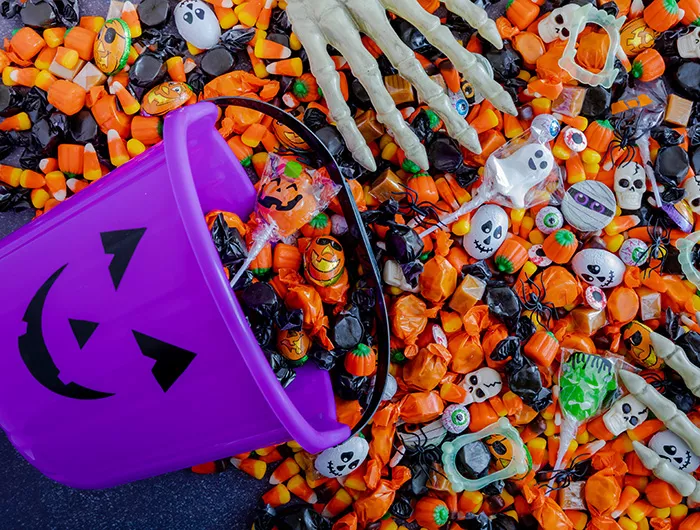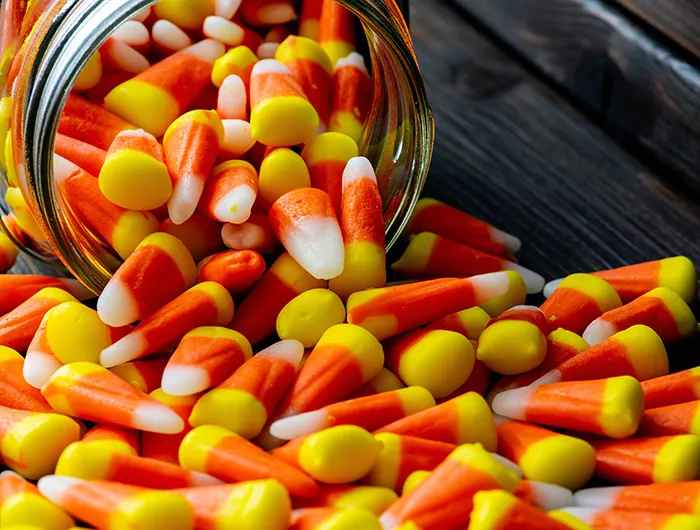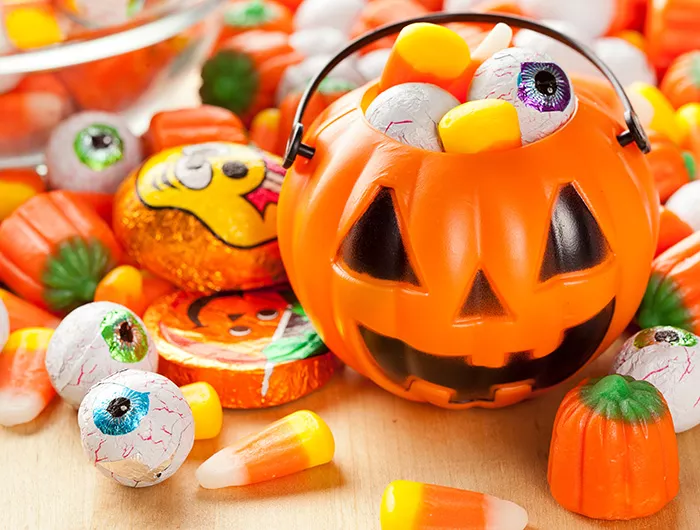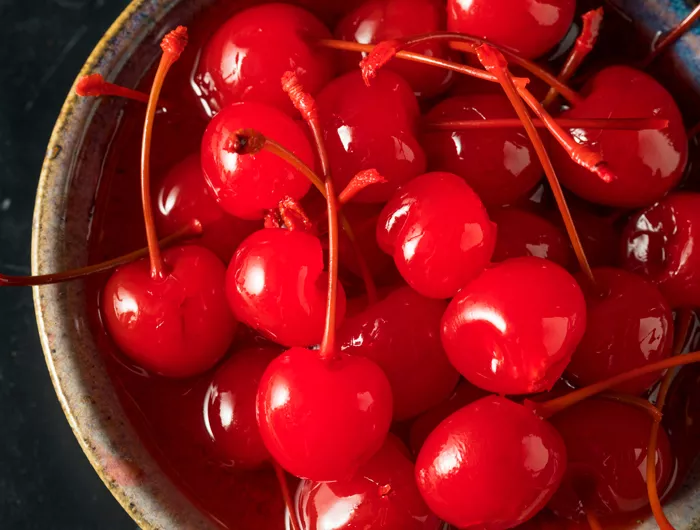Titanium dioxide: Hiding in Halloween candy, dairy, and more

Teri Virbickis - stock.adobe.com.
Titanium dioxide is found in numerous Halloween candies, yet Robert F. Kennedy, Jr., and the "Make America Healthy Again” movement have largely ignored this unsafe color additive. Here’s what you should know about which food products contain this additive and how you can join our call for removing titanium dioxide from the food supply.
MAHA has largely ignored titanium dioxide
So far, Health Secretary Robert F. Kenney, Jr.’s actions on food dyes have relied on voluntary policy tools. On April 22, 2025, the FDA announced plans to "phase out" from the food system six petroleum-based synthetic dyes (Blue 1, Blue 2, Green 3, Red 40, Yellow 5, and Yellow 6) by the end of 2026. However, the agency did not issue a ban; instead, the FDA asked food manufacturers to voluntarily comply with the agency's request to remove these food dyes. Because using synthetic food dyes has always been voluntary, there is no incentive from the announcement for manufacturers to switch to natural food colors.
In addition, as the “Make America Healthy Again” movement has focused on these synthetic petroleum-based dyes, it has largely ignored titanium dioxide, another unsafe food color.
What is titanium dioxide?
Titanium dioxide (TiO2) is a chemical currently approved for use in the US as a color additive in foods. As with other food dyes, titanium dioxide does not have a nutritional or preservative function, but instead is used solely for superficial purposes, like adding a white color and brightness to foods and beverages.
TiO2 can be found on grocery shelves in a wide range of brand-name food products, including Wegmans’ Original Mac ‘n Cheese, Marzetti’s Cream Cheese Fruit Dip, and Campbell’s Healthy Request Chunky Chicken Corn Chowder Soup.
Despite health concerns, the FDA has failed to ban titanium dioxide
A safety evaluation by the European Food Safety Authority (EFSA) suggests that when people ingest food-grade titanium dioxide, small particles—or “nanoparticles”—can potentially accumulate in the human body over time and cause genetic damage. In turn, damage to DNA is one way that chemicals can cause cancer and other health problems. Accumulation of TiO2 nanoparticles in the body may also damage the immune and nervous systems. Based on these concerns, the European Union banned the use of titanium dioxide in foods in 2022.
Due to the possible negative health effects of ingesting titanium dioxide nanoparticles, CSPI’s Food Additives Safety Ratings tool, Chemical Cuisine, currently advises consumers to avoid food products containing this additive. However, some food labels do not directly list titanium dioxide as an ingredient, instead hiding the ingredient behind terms like “color added” or “artificial color.” This makes it more difficult for consumers to determine whether TiO2 is in a particular product, increasing the need for government action to protect consumers from the additive.
Despite EFSA’s extensive review of evidence and the subsequent EU ban, the FDA still allows for the use of titanium dioxide in foods in the US. CSPI and four other food safety and public health advocacy groups petitioned the FDA in March 2023 to revoke approval of titanium dioxide as an additive in food products. The FDA is required to address petitions within 180 days, but the agency has not yet responded.
While we wait for the FDA to do its job and for industry to do the right thing and eliminate titanium dioxide from the food supply, you can protect your health and your family in the interim by following CSPI’s recommendation to avoid foods containing titanium dioxide.
Which Halloween candies contain titanium dioxide?

While CSPI and our partner organizations work to eliminate TiO2 from all foods, the best thing consumers can do is be aware and avoid the chemical when possible, including in Halloween candies. We're not opposed to having a treat on Halloween—but titanium dioxide can potentially cause DNA damage, is in hundreds of food products, and should be avoided whenever possible. Here's a non-comprehensive list of what to look for.
- Some varieties of the corn-shaped Halloween candy made by Brach's, including Brach’s Fall Festival Candy Corn, contain titanium dioxide.
- Trolli produces an assortment of unique shapes for its gummy candies and uses TiO2 for added coloring in many of them. For example, the Sour Bursting Crawlers, Sour Brite Crawlers, Sour Brite Octopus, Sour Watermelon Sharks, and Strawberry Puffs all contain this unwanted additive.
- If you find some Ring Pops on the trick-or-treat trail, take note that some flavors, including the Berry Blast variety, contain titanium dioxide.
How do I find ingredient lists for individually wrapped candies?

It’s true that a lot of the candy your child comes home with will be individually wrapped and labeled “Not for Resale.” That might mean there’s no ingredient list or nutritional information on the candy itself. However, if you’re concerned about additives, particularly those that can potentially cause DNA damage or cancer, it pays to track down the ingredient panels online. When possible, go directly to the manufacturer’s website rather than a retailer’s website, which may be outdated. Unfortunately, in some cases a brand-name food product's ingredient information may not be available online, making an even stronger case for policymakers to take action to remove titanium dioxide from the food supply.
If you’re curious about which additives we recommend avoiding—and why—check out CSPI’s Food Additive Safety Ratings database.
How you can help: Tell the dairy industry to ditch TiO2
Titanium dioxide is banned from food in Europe because of safety concerns, but the dairy lobby joined forces with other industry groups and successfully fought to strip titanium dioxide from laws passed in California in 2023 and 2024 that banned unsafe additives from foods sold statewide and in schools. Recently, the dairy industry promised to remove some food colors from some of their products (specifically, synthetic food dyes from ice cream and products sold or served in schools) over the next several years. Yet the dairy industry has not committed to eliminating titanium dioxide from common food products.
There's no need for titanium dioxide in milk, ice cream, or any other dairy product—or any food for that matter—and there's no reason Big Dairy should be fighting so hard to keep this unsafe chemical legal. Sign our petition demanding that the International Dairy Foods Association commit to removing titanium dioxide from all dairy products sold in the US by the end of 2026.
CSPI is your food & health watchdog
We envision thriving communities supported by equitable, sustainable, and science-based solutions advancing nutrition, food safety, and health.
As a nonprofit organization that takes no donations from industry or government, CSPI relies on the support of donors to continue our work in securing a safe, nutritious, and transparent food system. Every donation—no matter how small—helps CSPI continue improving food access, removing harmful additives, strengthening food safety, conducting and reviewing research, and reforming food labeling.
Please support CSPI today, and consider contributing monthly. Thank you.

Stirring the Pot
Join the fight for safer, healthier food
Sign up to receive action alerts and opportunities to support our work in Stirring the Pot, our monthly newsletter roundup.

